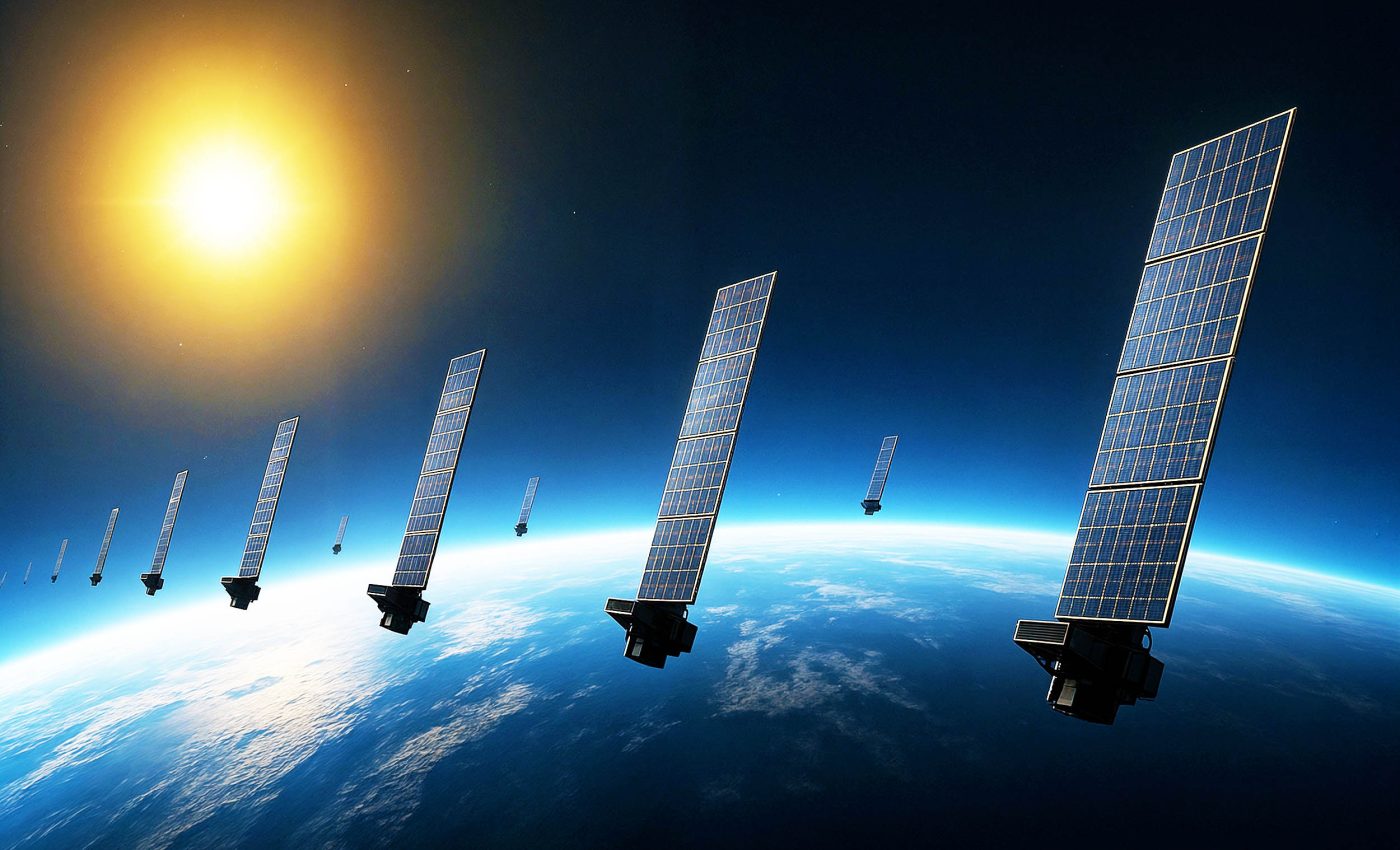
SpaceX’s Starlink satellites leak radio signals that threaten to ruin astronomy
Space is usually quiet at the frequencies that radio telescopes prize most. Over the last two years, however, scientists listening for whispers from the infant universe keep hearing radio signals from a loud new neighbor: SpaceX’s Starlink fleet.
Steven Tingay of Curtin University and the International Centre for Radio Astronomy Research (ICAR) led the team that traced the interference back to nearly 2,000 satellites using a prototype station of the Square Kilometre Array‑Low (SKA‑Low) in Western Australia.
Starlink radio noise blocks cosmic signals
Radio telescopes hunt for the faint glow of neutral hydrogen, a gas that filled space before the first stars switched on. Those signals arrive on Earth at strengths a thousand times weaker than a modern phone tower.
Even unplanned emissions from orbit can wipe them out. The survey found that unintended satellite leakage can match the brightest natural radio sources seen from Earth, which is enough to bury data at key hydrogen frequencies.
“It’s like taking the strongest sources in the sky and putting a bunch more artificial ones in, then making them move around a lot,” described Tingay.
Desert telescope tracks Starlink leaks
The team pointed 256 dipole antennas across a 35‑meter (115-foot) patch of desert known for its radio silence.
Across 29 days they recorded 2,446,692 full‑sky images spanning 24 frequencies between 73 and 235 megahertz.
Sophisticated software compared each snapshot with real‑time satellite orbits. Every time a passing craft lined up with an unexpected spike in brightness, the program logged a hit.
By the end, 1,806 individual Starlink satellites, about 28 percent of the active constellation at the time, had betrayed a signal.
Some appeared in nearly a third of all images captured at 170 megahertz, a band earmarked for early‑universe studies.
Satellite noise outshines natural space signals
Two kinds of emissions dominated the log.
Most satellites leaked a broadband hum across the entire 0.9‑megahertz window being measured. In addition, a smaller subset blasted a narrow, 13‑kilohertz tone every 100 seconds at 137.05 megahertz.
Those pulses hit seven million janskys at the dish, outshining the Milky Way by orders of magnitude.
Dylan Grigg, a Curtin University data specialist, noted that “the best way to stop this unintended emission is for the satellites to either reduce it or to stop it,” at the end of a long overnight observation run.
The International Telecommunication Union (ITU) reserves three slices of the spectrum, 73‑74.6, 150.05‑153, and 322‑328.6 megahertz, for radio astronomy.
Starlink leakage turned up in two of them, with 703 satellites detected in the lower protected band alone.
Because the rules govern only deliberate transmissions, no regulations are technically being broken. Yet the power difference between the leaks and the cosmic signals that astronomers seek can reach a factor of ten thousand.
Reducing Starlink radio noise
Starlink already dims its spacecraft in visible light by tipping solar panels away from Sun reflections. A similar hardware tweak, better shielding around onboard avionics, could muffle stray radio waves before they leave the bus.
Software filters on Earth offer a backup plan. Still, Tingay warns that erasing satellite noise in post‑processing may demand more computing power than the science analysis itself.
If hardware fixes prove impractical, operators could at least switch off problem components when passing above observatories.
SpaceX already blanks its internet beams over major facilities; extending that courtesy to background electronics would help.
Mega‑constellations and future astronomy
Starlink is only the largest of several planned networks. Amazon’s Kuiper, OneWeb‑Eutelsat, and China’s G60 project each aim for thousands of craft in similar orbits.
Without new standards, the combined leakage could turn Earth’s low‑frequency sky into broadband static.
That would cripple missions such as SKA‑Low’s quest to map the “cosmic dawn,” when the first galaxies ignited about 13 billion years ago.
Radio astronomy and leaky Starlink
Astronomers have begun lobbying the ITU to extend protections to unintentionally radiated energy. Defining leakage limits, as already exists for consumer electronics on the ground, would give satellite makers a clear design target.
National spectrum agencies could then certify satellites before launch. Failing that, operators might face strict observing‑zone blackouts enforced by orbital debris tracking systems.
“The emissions are not regulated right now, but discussion has started,” Tingay said during the team’s briefing to Australian policymakers. He hopes the new data “provides the evidence base needed to move that process along.”
Time is tight. Starlink launches continue roughly once a week, with each Falcon 9 delivering up to 23 new units. Every fresh craft adds to the background haze, and older models show no sign of going quiet on their own. If action waits for the full 30,000‑satellite network, recovering a clean sky could be impossible.
Astronomy survived shortwave radio and television because engineers and regulators learned to share the dial. Whether low‑Earth orbit broadband joins that success story now rests on choices made in the next few years.
The study is published in Astronomy & Astrophysics.
—–
Like what you read? Subscribe to our newsletter for engaging articles, exclusive content, and the latest updates.
Check us out on EarthSnap, a free app brought to you by Eric Ralls and Earth.com.
—–













